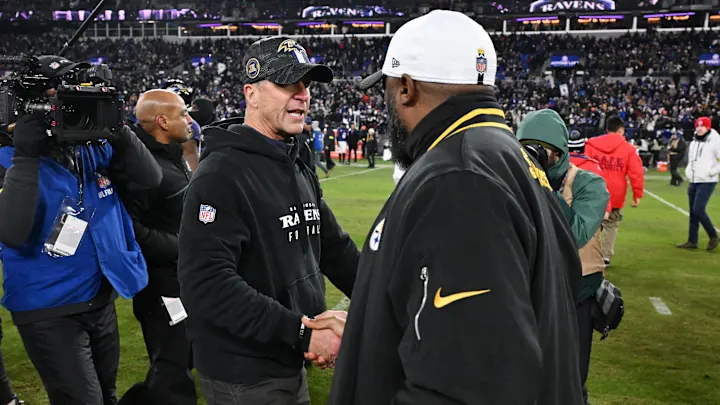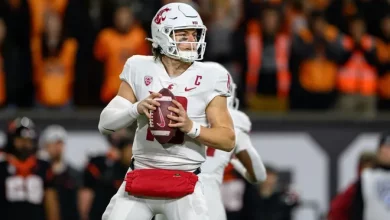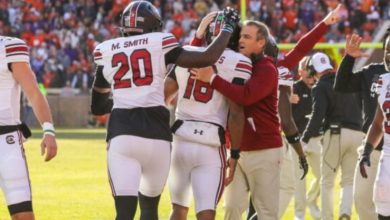Federal charges have been brought against a Maryland man for unlawfully using a drone during a Ravens game.

In a surprising and alarming turn of events, federal charges have been brought against a Maryland man for unlawfully using a drone during a Baltimore Ravens game. The incident has sparked widespread discussions about privacy, security, and the evolving role of technology in professional sports. While drones have become more accessible to the general public, their use in areas such as sporting events—particularly those of national significance—raises significant concerns about safety and the potential for illegal activities.
The case has not only caught the attention of law enforcement but also triggered debates regarding how sports organizations, government agencies, and the public must respond to the growing use of drones in restricted airspaces. This incident is an example of the challenges that modern technology presents when it intersects with longstanding rules, regulations, and security protocols in high-profile venues.
This article will delve into the details of the case, the federal charges brought against the man, the potential implications for drone use at sporting events, and broader questions regarding safety and surveillance in the age of technological innovation.
The Incident: A Drone at a Ravens Game
The incident in question took place during a Baltimore Ravens home game at M&T Bank Stadium, the team’s longtime venue in the heart of Baltimore, Maryland. According to reports from the Federal Aviation Administration (FAA) and the Baltimore Police Department, a drone was seen hovering above the stadium during a game between the Ravens and an unnamed opponent.
The game, attended by thousands of fans and broadcasted nationally, took place under close surveillance, with stadium security, local law enforcement, and federal authorities monitoring the area. Drones are a growing concern for safety at major events, as they can easily fly into restricted airspace and present a variety of risks—ranging from interference with stadium operations to potential threats to public safety.
It was only after an alert from an observant spectator that security teams and law enforcement authorities took notice of the drone flying near the stadium. Initially, there was confusion about the drone’s purpose. As security personnel scrambled to track the drone’s movements, it became clear that the drone’s operator was not authorized to fly in that particular airspace, which is designated as a “no-fly zone” by the FAA.
Drones, or Unmanned Aerial Systems (UAS), are prohibited from flying within a certain radius of stadiums during major events as a security measure. The FAA has imposed strict guidelines that prohibit drone flights within a five-mile radius of such venues without explicit authorization from authorities. The operator of the drone, who was later identified as a man from Maryland, was violating these established regulations, prompting federal law enforcement to investigate the situation.
Authorities quickly identified the man responsible for flying the drone, and he was arrested for his actions. The suspect’s intentions remain unclear, though law enforcement officials have speculated that the drone could have been used to gather footage of the game or, more concerningly, for nefarious purposes such as smuggling or surveillance. Regardless of the motives, the legal implications of using a drone in such an environment are serious and far-reaching.
The Federal Charges
In response to the illegal drone activity, the man from Maryland has been charged with multiple federal offenses, including violations of the FAA’s regulations on drone operations and the unlawful interference with interstate commerce. The specific charges levied against the individual are based on his unauthorized use of the drone in restricted airspace during a federally regulated event.
- Violation of FAA Regulations: The FAA has established clear rules surrounding drone flights near stadiums. Drones cannot be flown within five miles of a stadium during major sporting events unless the operator has received special authorization. These regulations were put in place to ensure public safety and prevent potential disasters that could arise from drone interference. Violating these regulations carries serious penalties, including fines and possible imprisonment.
- Unlawful Interference with Interstate Commerce: The use of drones to disrupt commercial activities, including professional sporting events, can be classified as interference with interstate commerce. The rationale for this charge is that the event—such as a Ravens game—attracts visitors from across state lines, generates significant economic activity, and is broadcasted to a national audience. Any disruption to the event or its operations could be viewed as an infringement on the broader economic framework tied to the game.
- Endangerment and Public Safety: While the specific details of the drone’s potential risk are still under investigation, it is possible that the drone’s flight presented a danger to spectators, players, and personnel. The FAA’s regulations are also meant to prevent any situation in which a drone could cause physical harm, such as a crash into the stadium or interference with security protocols.
If convicted, the man faces significant fines and possible imprisonment. The exact penalty will depend on the severity of the violation, the operator’s intent, and whether any further charges are filed based on the investigation.
The Growing Threat of Drones at Sporting Events
This incident underscores the growing concerns surrounding the use of drones in restricted airspaces, particularly at large sporting events. Drones have become increasingly popular in recent years, and while they offer numerous benefits in fields like photography, surveillance, and recreation, they also pose significant risks when used improperly or maliciously.
At major sporting events, drones can be used for a variety of purposes, some of which are harmless, like capturing aerial footage of the game. However, drones can also be used to smuggle prohibited items into stadiums, track players or personnel for criminal purposes, or disrupt security systems. The risks posed by drones are especially concerning at high-profile venues like NFL stadiums, where large crowds are present and the stakes are high.
The incident at the Ravens game highlights the importance of maintaining strict control over the airspace around these venues. Drone detection systems, security measures, and coordination with local law enforcement and federal agencies are critical in ensuring that events proceed smoothly without interference. The FAA has worked with the NFL and other professional sports leagues to implement drone detection systems that can quickly identify unauthorized drones and alert security personnel before they can cause harm.
The Legal Landscape: Drone Regulations and the Future of Sporting Event Security
As drones become more ubiquitous, governments and organizations have been working to develop clearer regulations and technologies to control their use in sensitive areas. The FAA has put in place several rules regarding drone operation near stadiums and large public events, with significant penalties for violators. These measures are intended to balance the benefits of drone technology with the need to maintain safety and security at large gatherings.
- FAA Rules on Drones: The FAA has established specific guidelines that regulate drone flights near stadiums and other critical infrastructure. According to FAA regulations, drones cannot fly within a five-mile radius of any stadium that is hosting a major sporting event. These regulations are designed to prevent drones from interfering with the operations of the stadium and to minimize the risks posed by drones flying in crowded or restricted airspaces.
- Technology and Security Measures: In response to the growing concerns about drone use, stadiums and event organizers have begun implementing advanced drone detection systems. These systems are designed to identify unauthorized drones in the vicinity of the venue and can provide real-time alerts to security personnel. These technologies are essential in preventing incidents like the one that occurred at the Ravens game and ensuring that drones are not used to disrupt the event.
- Future Legislation: The incident involving the Maryland man could spur further discussions and legislative action to enhance drone security measures. In recent years, there has been a push for more stringent regulations surrounding drone operations, particularly as drones have become more capable and accessible to the general public. As drones are increasingly used in commercial applications, there will likely be calls for more robust oversight to protect public safety, especially in high-profile settings like sports venues.
Public Reaction and Implications for Drone Usage
The arrest of the Maryland man has generated significant public interest, especially regarding the implications for drone usage at sporting events. Many fans are concerned about the potential for drones to disrupt the experience of attending a game or participating in an event. The rise of drone technology presents a new challenge for security personnel, who must stay ahead of increasingly sophisticated technology that can be easily accessed by the general public.
Some advocates for drone technology argue that drones can be used in a responsible and beneficial manner, such as enhancing the fan experience by providing unique perspectives of games or assisting in stadium operations. However, incidents like the one at the Ravens game serve as stark reminders of the potential dangers posed by drones, particularly when they are flown by unauthorized individuals.
The use of drones at sporting events will likely continue to be a topic of debate in the coming years, as sports organizations, law enforcement agencies, and technology companies work together to develop solutions that balance innovation with safety.
A Growing Concern in the Age of Technology
The federal charges brought against the Maryland man for unlawfully using a drone during a Ravens game serve as an important reminder of the security challenges that come with emerging technologies. While drones offer numerous benefits, their potential for misuse in sensitive environments like sports venues raises serious concerns about privacy, safety, and the security of large public events.
This incident also highlights the need for continued vigilance and investment in drone detection technology, as well as the importance of maintaining clear and enforceable regulations. The growing use of drones will undoubtedly continue to shape the landscape of professional sports and public safety, and it remains to be seen how organizations and governments will respond to the evolving challenges posed by this technology.
As drone technology becomes more advanced and accessible, it is crucial for stakeholders to collaborate on creating a framework that ensures safety and security without stifling innovation. The Ravens game incident is just one example of how this technology can intersect with public events, and it will likely have lasting implications for how drones are regulated at future sporting events.









